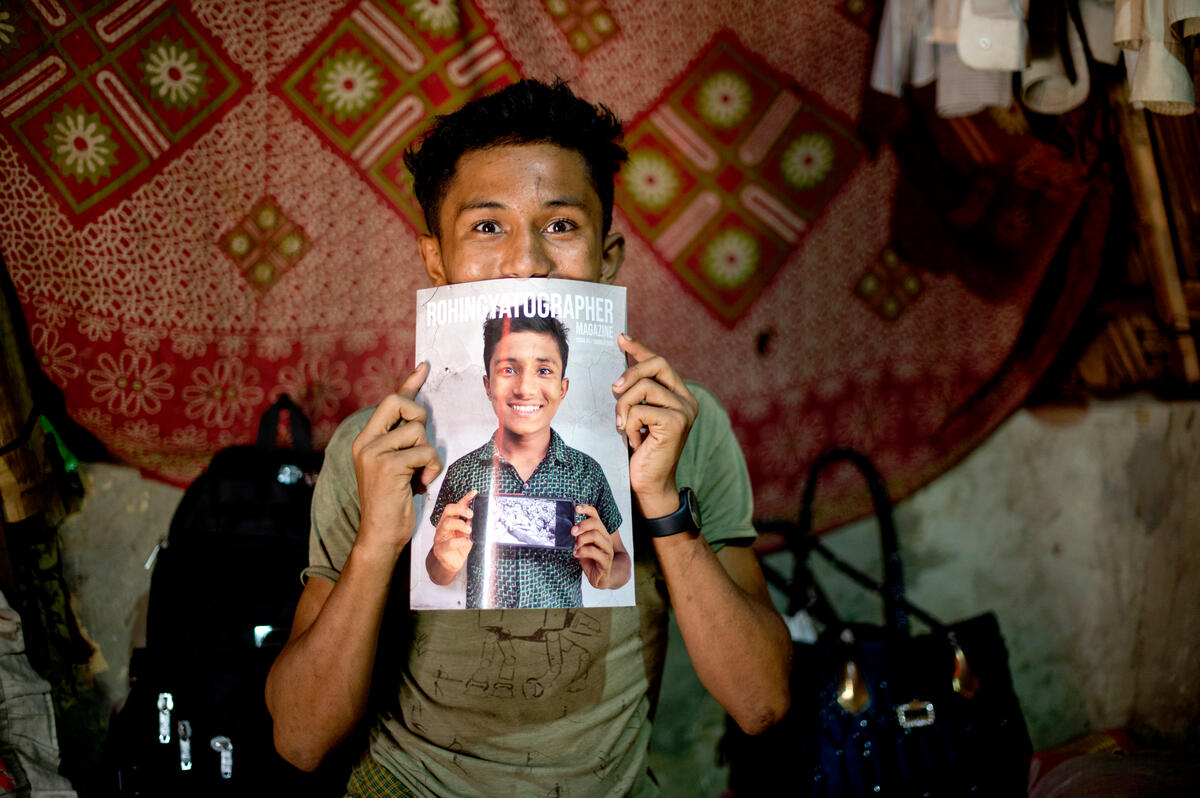UNHCR chief visits Dadaab, draws attention to "dramatic" Somali refugee crisis
UNHCR chief visits Dadaab, draws attention to "dramatic" Somali refugee crisis

DADAAB, Kenya, August 5 (UNHCR) - UN High Commissioner for Refugees António Guterres, while visiting a sprawling, overcrowded camp complex in north-east Kenya, put a spotlight on the "dramatic" Somali refugee crisis and called on the international community for more help.
"Together with the Kenyan people and the Kenyan authorities, we are facing one of the most dramatic refuge crises of the recent past in Dadaab, in a semi-arid area far from everything. We have nearly 300,000 refugees and thousands more coming in each month," he said.
Guterres, who is on an official three-day visit to Kenya, also described Dadaab on Tuesday as "the most difficult camp situation in the world." Located some 90 kilometres from the border with Somalia, the three camps at Dadaab were built to house some 90,000 people. Today, they are home to more than three times that number, mostly Somalis.
The long-term refugee population urgently needs improved infrastructure in one of the world's oldest refugee camps, including water distribution networks, and expanded services such as health and education. It also needs more room for expansion.
As the violence continues in Somalia, some 6,500 new arrivals flood to the camps each month, putting a further strain on the overstretched resources. Only a third of the new arrivals have been provided with land to erect a shelter, the rest have been forced to stay with friends and family.
The High Commissioner announced that UNHCR would provide an additional US$20 million this year to meet the needs of refugees and the host community. He also called for a massive injection of funds from the donor community to help the refugees and the local people.
"We count on the cooperation of the Kenyan government and the solidarity of the international community to make this possible and to mitigate the high price paid by the host community whose resources are being rapidly depleted."
During his visit on Tuesday, the High Commissioner watched UNHCR and Kenyan government officials conduct a joint verification exercise for long-term refugees aimed at updating the number of people in the camp. He visited the hospital in Hagadera camp and spoke to teachers and parents at a secondary school run by the local community. He also met with representatives of the refugee and host communities.
During his day-long visit, Guterres highlighted UNHCR's priority areas. He called for urgent improvements in conditions in the camps by putting more resources into water, sanitation, health, nutrition and shelter.
He also said UNHCR would relocate some of the refugees to Kakuma, a camp near Kenya's north-west border with Sudan. At the same time, he stated that extra land was needed to develop a new camp south of Dadaab.
The High Commissioner stressed the need to do more to support the local community, which has been adversely affected by hosting large numbers of refugees for extended periods. UNHCR will spend US$6 million on community projects to improve the environment, such as reforestation, and on providing water, health and education services for local people. Other UN agencies will also be involved in working to improve conditions of the local community.
"I feel it is a moral obligation to both the refugees and the host community to implement these priorities," Guterres said.
The latest arrivals included 19-year-old Adnan Amir Haji, who fled from his home in Hawl Wadaag, north-west Mogadishu, after a shell hit his home while he was out, killing his entire family. "I came home and saw the bodies of my family in the rubble. I will never get that image out of my head. I took a bus and then walked for two days to get here but I don't feel safe anywhere, not even here," he said.
The High Commissioner spoke to several refugees including Zainab Mohamed Hassan, a mother of four, who fled from central Somalia in 1992. "Unless there is peace in Somalia, we will lose hope of ever returning back home," she told the UNHCR chief.
Guterres is also due to hold talks with Kenya's President Mwai Kibaki, Prime Minister Raila Odinga and other top government officials.
By Yusuf Hassan in Dadaab, Kenya








